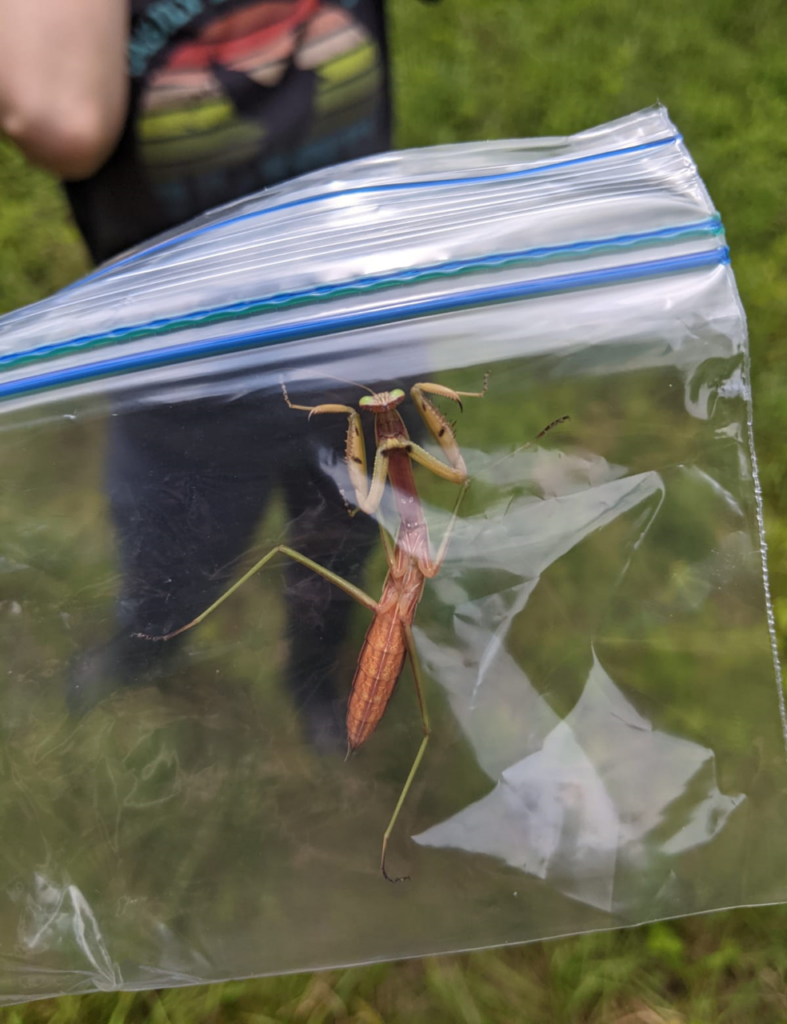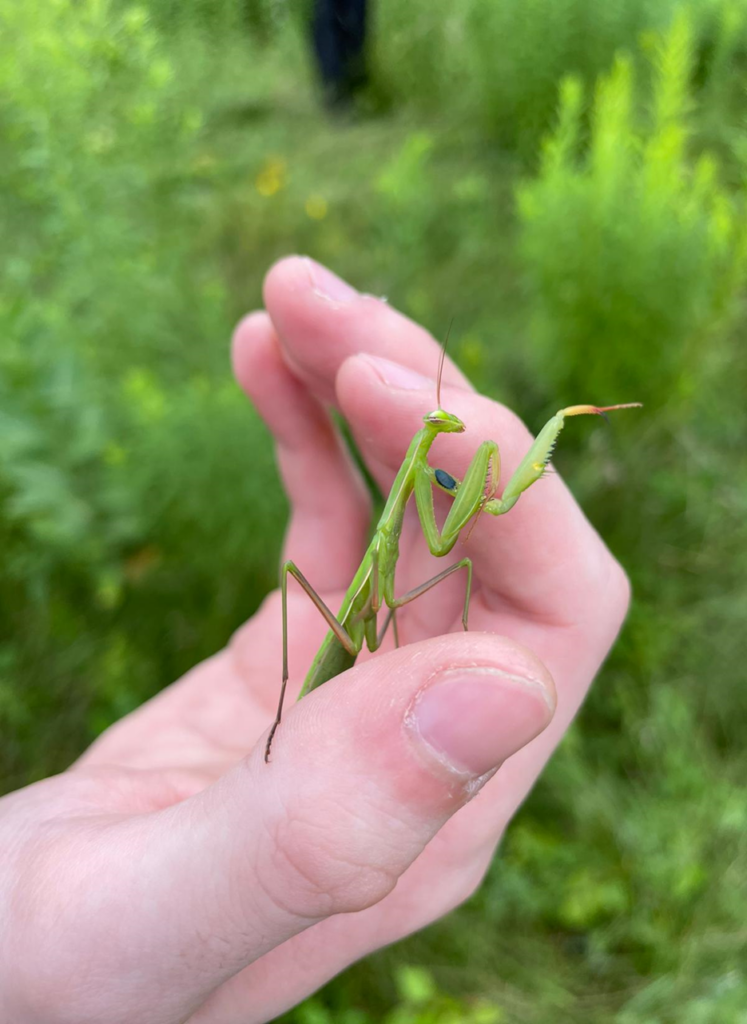Abundance, Morphometrics, and Diet Diversity of Invasive praying Mantises in Southeastern Massachusetts
Praying mantises are amazing and beautiful insects that are easily recognizable to the average person. They are well known in popular culture for the female’s habit of killing and consuming the male after mating, so her eggs will have a good dose of protein. While many people in the Northeast enjoy mantises, few realize that there are no praying mantises that are native to this region. There are two invasive mantis species that have become widespread in the Northeast – the Chinese Mantis (Tenodera sinensis) from Asia (Fig. 1), and the European Mantis (Mantis religiosa) from Afro-Eurasia (Fig. 2). These mantises are generalist predators, eating most anything they can fit into their mouths, and as a result they can cause major disruptions to the local arthropod food web and might be partially responsible for the decline of native species, including important pollinators such as butterflies and bees and native pest-controllers such as dragonflies and wasps. Our research group noticed that these generalist predators seemed highly abundant in meadows around Wheaton College, and we wondered what kind of impact they were having here locally. We decided to explore the species abundance, morphometrics, and diet of the mantids in old field meadows in southeastern Massachusetts to get an idea of their abundance, natural history, and impact on other species. We did this by collecting mantises along 100 meter transects in a series of five old fields from July through September of 2021. We dissected the collected mantises to remove their stomach contents for DNA analysis of their prey.
We found that the abundance of the Chinese mantis was greater than that of the European mantis, and we caught more females than males of the European mantis while we caught more males than females of the Chinese mantis (Fig. 3). The growth pattern of both mantis species was roughly linear over the course of the season, but the Chinese mantis reached a much larger final size than the European mantises (Fig. 4). DNA barcoding of the stomach contents of the mantises showed that they had consumed more than 270 different prey species, and that their diet diversity increased as their size increased, with the Chinese again having greater prey diversity overall (Figs. 5 & 6). The diets of all mantises were similar across fields, but the two different species actually had remarkably different diets, even when living in the same fields (Fig. 7).
Based on these results it seems that the Chinese mantis is the dominant invasive mantid in southeastern Massachusetts. They mostly feed on true bugs (order Hemiptera), butterflies and moths (order Lepidoptera), and grasshoppers (order Orthoptera), but their diets were incredibly diverse and included a lot of spiders, bees and wasps. The abundance of these invasive generalist arthropod predators in Massachusetts is concerning, especially given their broad diets which include many important native pollinators and predators. More research is needed on the factors that influence mantis abundance and methods for the control of their populations, but a first step should be to ban the sale of mantis oothecas (or egg cases) to the public, as these are marketed as a “natural pest control” method. Invasive mantises do not target garden pests, but instead consume a wide variety of important native arthropods.
By: Julianna Bauer, Kayla Lewis, Erin Ortega, Eleanor Ruhlin, Adi Shmerling, Samantha Teixeira
Advisors: Jessie Knowlton and Erin E. Wilson Ranken (UC Riverside)


Fig 3: Total captures of M. religiosa and T. sinensis by sex over the survey period.
Fig 4: Total length of M. religiosa and T. sinensis specimens over the surveyance period.
Fig 5: Frequency of different taxonomic orders identified in mantis diets
Fig 6:Average alpha diversity of M. religiosa and T. sinensis diets over the three months of surveys in 2021ance. Error bars are SE +/-1
Fig 7: Non-metric multidimensional scaling ordination of A) diet composition overlap by mantis species (F1,22 = 85.633, p = 0.001) and B) diet composition overlap of all mantids by site (F1,4 = 1.8, p = 0.05)
-
Categories:
- Academic Festival
- Academics
- Biology
- Environmental Science